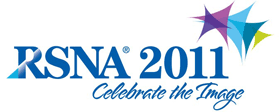
Abstract Archives of the RSNA, 2011
Melanie Shon Kuhlman MD, Presenter: Nothing to Disclose
Monique A. Meyer MD, Abstract Co-Author: Nothing to Disclose
Elizabeth Anne Krupinski PhD, Abstract Co-Author: Nothing to Disclose
The purpose of this study is to determine patients' understanding of what a radiologist is and how patients prefer to obtain their exam results.
All adult patients (<21 years of age) undergoing outpatient MRI and CT examinations at an academic medical center and at an outpatient imaging center associated with the academic medical center were given an anonymous hard copy survey over a four week period during February and March of 2011.
Three hundred surveys were distributed with a total of 237 surveys returned completed and without multiple responses provided for a question. The respondents were 55% female and 45% male with a median age of 65 years old. According to the survey results 60% thought a radiologist "is a physician specially trained to interpret radiology images," with 36% indicating a radiologist is a "technologist," and 4% a "registered nurse." Regardless of whether the exam was normal or abnormal, the patients indicated that they would prefer to get the results from the physician that ordered the exam (73% normal exam result, 77% abnormal exam results). However, when prefaced with receiving results from someone they knew versus an expert in interpreting the images, significantly more (X2=6.76, p<0.01) would prefer the "expert" (63%). Additionally, 73% of patients indicated that they preferred the fastest method of receiving their results regardless from whom they received the results from. As far as method of receiving results, the preferred method to receive normal exam results was mail (41%) and in person for abnormal results (40%).
A large percentage of our patient population does not know who a radiologist is and continues to prefer the practice model set in place, with the relaying of exam results by the ordering physician regardless of normal or abnormal results. However, when given the dimension of timeliness by which they receive the results, patients prefer to get their results from whoever can relay the information quicker regardless of the relationship to the patient, or the communicators' area of training. A new communication model may be needed to ensure patient satisfaction and ensure vitality and relevance to the radiology profession.
The radiology community is suggesting more direct communication between patient and radiologist with little clinical data to support that patients desire to communicate directly with the radiologist.
Kuhlman, M,
Meyer, M,
Krupinski, E,
Direct Reporting of Results to Patients: The Future of Radiology?. Radiological Society of North America 2011 Scientific Assembly and Annual Meeting, November 26 - December 2, 2011 ,Chicago IL.
http://archive.rsna.org/2011/11034297.html

